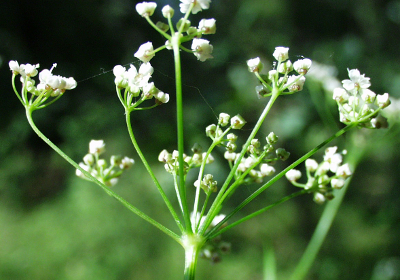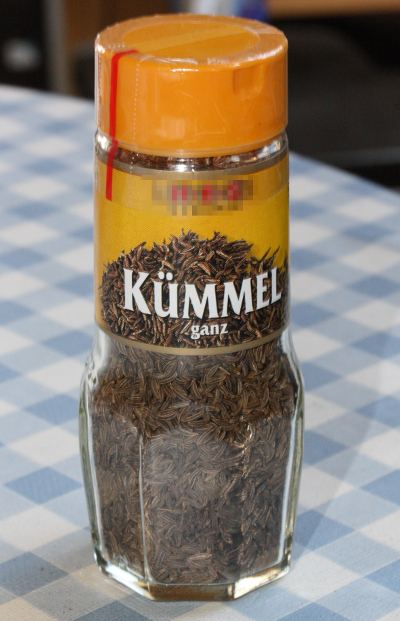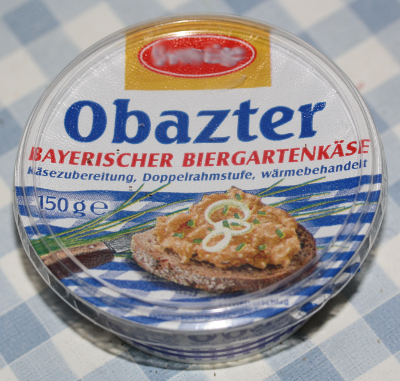Caraway |

Caraway usually neither has an involucre nor an involucel

Caraway can be used versatile in the kitchen

The Bavarian obatzter or obatzda traditionally is prepared with caraway
Historical publications
Hildegard of Bingen (1098–1179) recommended the caraway, in whatever form it is taken, against flatulence. She approved it well all healthy people and those with lung pain. The sick, she advised against the consumption, since it could flare up diseases. Fried or cooked cheese should be enjoyed only with caraway to prevent pain. Against nausea she handed down a recipe for cupcakes from caraway, pepper, burnet and breadcrumbs.
Leonhart Fuchs (1501–1566) knew the caraway under the name of "Mattkümel". In Greek, its name was Caro, in Latin Carum or Careum, the pharmacist would call it Carvi. The fruit of caraway was diuretic and gentle to the stomach. It would promote digestion and was good against flatulence. It was like anise applied externally and internally. The roots cooked like carrots are healthy and a diuretic feed.
Caraway as a medicinal plant
A teaspoon of roughly crushed caraway poured over with boiled water and left to infuse for 10 min, results in a tea that can be used for bloating and stomach pain. It stimulates the appetite and will even help against migraines. During lactation it can be used to promote milk production.
Caraway as a spice
Due to the digestive effect of caraway, which is attributed to its essential oils, it is added often heavy dishes such as goose and pork. Especially it is used in the southern German cuisine; think of sauerkraut, obatzter or caraway bread. Even in different cheeses caraway can be found.
Possibility of confusion with other species
Those who collect the plants to medicinal purposes or to consumption, must beware before highly toxic similar species. Similar fruits and flowers have the fool's parsley, the hemlock and the cowbane. During the caraway mostly neither has involucre nor involucel, the latter consists in fool's parsley of mostly 3 directed diagonally downward and elongated bracts that are present only on the outside. An involucre is usually absent.
The involucres of hemlock consist of 4–6 ovate-lanceolate, pointed leaves, the involucel consist of 5–6 triangular, downward directed leaves which are fused at the base. The cowbane is growing in or at the water and possesses usually no involucre, but many raylet leaves that are linear to lanceolate.
Interesting notes
-
Carway is a popular ingredient of mouthwashes due to its anti-inflammatory properties.
-
Alcoholic extracts of caraway are used for aquavit. The "köm", which is popular mainly in Northern Germany, is also a caraway schnapps.